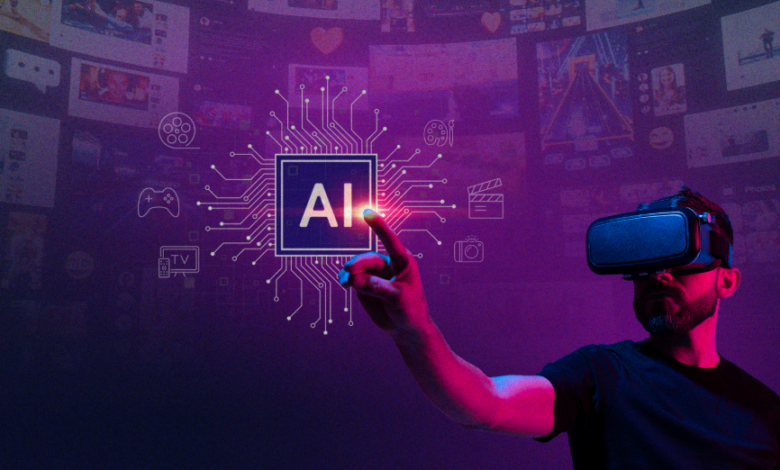How AI Is Revolutionizing the Streaming Experience?

Streaming services are no longer just about what to watch; they are about how you watch, when you watch, and why you keep watching. With the rise of artificial intelligence (AI), the streaming ecosystem is undergoing a profound transformation.
From personalised recommendations to real-time quality optimisation, AI is at the heart of this evolution.
In this detailed article, we will explore how AI is revolutionizing the streaming experience to make the users more satisfying and enjoyable.
Personalization & Viewer Experience
AI algorithms analyse viewers’ behaviour: what they watch, how long they stay, and what they skip. Based on that, streaming services like HuraWatch can suggest titles with far higher relevance than generic lists. This improves engagement and satisfaction.
Personalized presentation
Beyond just recommending titles, AI also adjusts how content is shown: which thumbnails you see, what order of suggestions, and even little tweaks in UI based on your viewing habits. For example, platforms use AI to pick a thumbnail image tailored to you.
Discovery & localization
For global audiences, AI helps surface content that matches regional language, culture, and preference, helping users find local gems rather than only global hits. This supports inclusion and broader reach.
Key benefits for viewers:
- Less time wasted scrolling; more time watching.
- More relevant content served.
- Discovery of content you might not have found manually.
Key benefits for platforms:
- Higher retention and lower churn.
- Better use of the catalogue.
- Deeper viewer insights for planning.
See also: How the USA Is Adopting Sustainable Transport with Smart Tech
Delivery, Streaming Quality & Accessibility
Adaptive streaming powered by AI
AI monitors network conditions, device types, and user bandwidth, and dynamically adjusts bitrate, resolution, and buffering logic so that playback remains smooth even on sub-optimal networks.
Encoding, compression, and network optimisation
AI-enhanced codecs and smart delivery networks (CDNs) predict traffic, route content optimally, and allocate resources where needed. This reduces delivery cost, latency, and improves video quality.
Accessibility & global reach
AI tools generate subtitles, dubbing, speaker diarization, and language detection, making streaming accessible across languages and devices.
Why this matters:
- In regions with weaker connectivity, smooth delivery means more users can access streaming reliably.
- Higher quality playback increases viewer satisfaction and platform reputation.
- Accessibility tools expand the potential audience.
Content Workflow & Efficiency
Automated editing & scene tagging
AI can scan content, identify key scenes, auto-generate thumbnails or summaries, and tag metadata for search and classification. This accelerates editing and metadata workflows.
Production support & localisation
AI assists with dubbing, subtitles, translation, and even some elements of visual effects generation, making it faster and cheaper to produce localized or niche content.
Better content strategy
By analysing what types of content perform, what segments engage, AI gives platforms insight into which shows to commission, license, or promote. This makes investment decisions smarter.
Resulting advantages:
- Faster turnaround: More content, faster localization.
- Lower cost: Automation replaces parts of manual workflows.
- More niche and local content becomes viable.
Business Impact: Monetisation & Retention
Predictive analytics for retention
AI models identify users who might cancel soon (churn risk) and enable platforms to intervene.
Smarter advertising & bundling
For an ad-supported streaming platform, AI tailors ad insertion to the user profile and viewing context. Also helps determine optimal subscription tiers and promotions based on behaviour.
ROI on content investment
Rather than relying only on gut feel, platforms use AI to forecast viewership, identify underserved niches, and allocate budgets more efficiently.
Bottom line:
- Higher revenue per user.
- Lower acquisition/retention cost.
- Smarter investment in content and marketing.
Challenges & Ethical Considerations
Privacy & data use
AI requires significant user data, i.e., what you watch, how you act. Platforms must ensure transparency, consent, data security, and compliance with regulations.
Bias & filter-bubbles
If recommendation AI just shows what you’ve already watched, users may miss novelty or different types of content, reducing diversity. Monitoring bias and ensuring discovery remains possible is key.
Quality vs authenticity
As AI aids in production (editing, effects, dubbing), platforms face questions: how much is human-driven? Are audiences told when AI was used? Creative integrity must be maintained.
Technical cost & infrastructure
Deploying these AI systems, real-time adaptation, analysis, and localization, requires tech investment, data handling, and infrastructure.
Conclusion
AI is no longer just an add-on for streaming platforms; it is the engine driving improved user experience, smarter delivery, more efficient content workflows, and stronger business outcomes. From personalised suggestions to flawless playback, from cheaper localisation to smarter investment decisions, the impact is wide-ranging and significant.
If you’re a viewer, this means more relevant content, smoother playback, and a bigger choice. If you’re a platform or content creator, AI gives you a competitive edge. As streaming continues to expand, platforms that harness AI thoughtfully will lead, and those that don’t risk falling behind.
People Also Ask:
How exactly is AI changing the streaming experience?
AI analyzes viewing habits, preferences, and behaviour to personalize recommendations, improve video quality, and reduce buffering, creating a smoother, more tailored experience for every viewer.
What are AI recommendation systems in streaming platforms?
They are machine-learning models that predict what a user will enjoy next by studying watch history, ratings, and engagement. Netflix, YouTube, and Spotify use such systems to keep users engaged.
How does AI improve video quality and streaming speed?
AI-driven adaptive streaming adjusts resolution and bitrate in real time, depending on internet speed and device performance, ensuring uninterrupted playback even on weaker networks.
Does AI help with subtitles and translations in streaming?
Yes. AI automates the creation of subtitles, dubbing, and translation across multiple languages, making global content accessible to more audiences within seconds.
How do streaming companies use AI to retain viewers?
AI identifies when users are likely to lose interest or cancel subscriptions, then helps platforms re-engage them with personalized offers or content that fits their past preferences.





